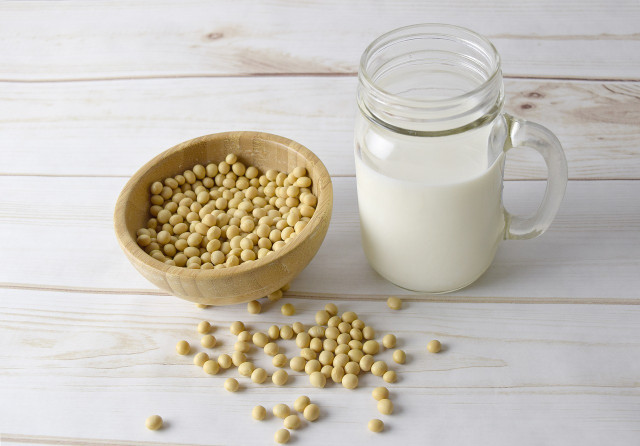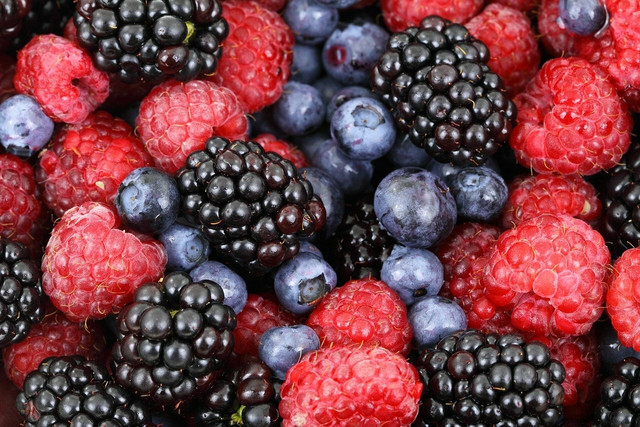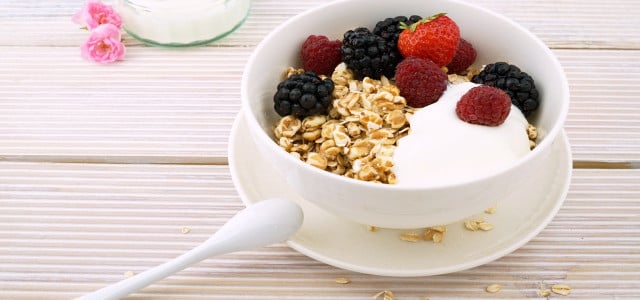Is it possible to make vegan kefir? Packed with probiotics, kefir is a healthy addition to your diet. We'll share two different ways to make delicious and nutritious non-dairy kefir.
Kefir is a fermented, probiotic drink that comes from Eastern Europe. There are two types of kefir: water kefir and milk kefir. Water kefir is naturally vegan and has a yellowish/ clear crystal color. It is usually made with sugar water, fruit juice, or coconut water. Milk kefir is thick and creamy and is usually made with dairy milk.
Can Kefir Be Vegan?

(Foto: CC0 / Pixabay / bigfatcat)
If you’re looking for vegan kefir, you can either choose to make the naturally vegan water kefir or make kefir made with water kefir and a non-dairy milk alternative.
Kefir is made using kefir grains, which are little balls of bacteria and yeast. Milk kefir and water kefir are made with different types of grains. Milk kefir grains look a bit like cauliflower, while water kefir grains look like small crystals.
In order for the necessary fermentation to take place, milk kefir grains must feed off of the lactose that is contained in dairy milk. Because plant-based milk alternatives do not contain this type of sugar, it is not possible to make vegan kefir in the traditional way.
It is also possible to buy vegan kefir in some specialty health food stores. Popular brands include KeVita for water kefir or Coyo for non-dairy milk kefir.
Non-Dairy Kefir: Two Options



(Foto: CC0 / Pixabay / PublicDomainPictures)
Kefir can be made dairy-free in two different ways. You can either make plant-based milk kefir or kombucha-like flavored water kefir. For both methods, you’ll need a water kefir base. If you can’t find it in your local health food store, you can make it yourself.
How to Make Water Kefir Base:
Making water kefir takes about 3 days, but requires only a few minutes of hands-on time. All you’ll need is water kefir grains and water (tap water works perfectly). Water kefir grains can be found in some specialty supermarkets, or online on Amazon**.
Fill two 2-quart mason jars halfway with water. Mix 1/4 cup of organic cane sugar into each jar. Stir until dissolved. Next, add 1/4 cup of water kefir grains to each jar and stir gently. Cover with a kitchen towel and let sit in a warm place for about 2 days. Then, do a taste test to check how the fermentation process is going. If the water kefir still tastes very sweet, the sugar has not been completely metabolized, so you’ll want to leave it to ferment for another day. If it has a tangy taste, you’re ready for the next step. Strain the water kefir and set it aside. Now you are ready to decide which variation of non-dairy kefir you want to make.
How to Make Plant-Based Vegan Milk Kefir:
Plant-based vegan milk kefir is a great alternative to classic yogurt-like kefir.
Add ¼ cup water kefir water and 2 cups of sweetened soy milk into a clean glass jar. Close the lid and leave the jar out at room temperature to ferment for 24 hours. Check the jar once every 6 hours to release the built-up pressure (if you have to leave it for a longer amount of time, just loosen the lid a bit to allow air to escape). It is ready to serve. If you want to add extra flavor, you can stir in vanilla, cinnamon, turmeric, or cocoa powder.
Flavored Water Kefir:
Flavored water kefir is delightfully fizzy and refreshing. Flavored with fruits and herbs, it is a perfect healthy soda alternative.
Add 1½ cups of fresh fruit to a 2-quart mason jar. You can use any combination of berries, peaches, pineapples, grapefruit, pears, or any other fruit that you love. You can also add fresh herbs from your kitchen herb garden for extra flavor. Fill with water to ½ inch from the top and cover tightly with a lid. Be sure to release the built-up pressure about once every six hours. If you have to leave it for longer, loosen to the lid to allow air to escape while you’re away.
How To Use Kefir
Plant-based milk kefir has multiple uses: add it to your smoothies or your salad dressing, use it as a milk alternative for your cereal, use it for cooking and baking, or simply enjoy it on its own.
Water kefir doesn’t have much application in the kitchen, but there are still lots of ways to add different flavors. Try adding chopped fruit, fresh herbs like mint or basil, juice, or tea to make your vegan kefir even more refreshing.
Read more:
- How to Ferment Vegetables: A Beginner’s Guide – Utopia
- Fermented Black Garlic: The Trend, Uses, and Health Benefits
- Sauerkraut Juice: Uses, Benefits, and Side Effects
Do you like this post?







